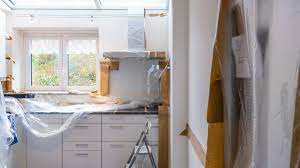Mold can be a huge problem for homeowners. It can cause respiratory problems and other health issues, and it can also damage your home. If you’re planning to build a mold-resistant home, there are some things you need to keep in mind during the construction process. In this blog post, we will discuss some of the most important steps you need to take to protect your home from mold!
Construction Strategies: When preventing mold growth in your home, the construction process is key. Make sure you choose materials that are designed to resist mold and mildew. These include materials such as treated lumber, concrete blocks, and metal sheeting. Also, ensure there are no areas where water can collect or pool during rains or floods. It’s also important to ensure that any plumbing pipes or fixtures are properly sealed so that moisture cannot seep into them, which can lead to mold problems later on!
Proper Ventilation: Proper ventilation is essential for limiting mold growth in your home. Ensure all rooms have adequate airflow by opening windows regularly and installing exhaust fans when possible. This will help keep moisture levels low and discourage the growth of any potential mold spores. One of the best ways to ensure proper ventilation is to use a dehumidifier in each room of the home.
Regular Cleaning and Maintenance: Regular cleaning and maintenance are important in keeping mold away from your home. Make sure to clean all surfaces regularly with non-toxic cleaners to help reduce the chances of mold spores settling on them. Additionally, keep an eye out for any signs of water damage or leaks that could lead to mold growth. If you see any potential problem areas, it’s best to address them immediately before they get worse!
Keep the building dry: Try to keep your home dry as much as possible. This means that you should avoid having excess moisture buildup in the air and ensure there is no standing water anywhere in the house. Keep an eye on any plumbing fixtures or piping and ensure they are not leaking or dripping. It’s also good to open windows regularly so fresh air can circulate through your home and help reduce moisture levels!
Design your vents for easy cleanup: One of the best things you can do to prevent mold in your home is to design your vents for easy cleaning. This means that the vents should be easy to access, so you can clean them regularly and remove any dust or dirt buildup before it leads to mold growth.
Be mindful of the access to the basement: Basement and attics are among some of the rooms most susceptible to mold. Basements tend to be particularly damp and, as a result, create the ideal environment for mold to thrive. Similarly, attics are typically not well-ventilated, which can lead to moisture buildup. To prevent mold growth in these areas, ensure adequate ventilation and keep them dry as much as possible!
Pay proper attention to your roofing: Roofing is another important part of preventing mold growth in your home. Use materials designed to resist mold and mildew, such as metal sheeting or shingles with a special coating. Additionally, keep an eye out for any potential water damage or leaks that could cause mold problems later on!
Make proper use of drains: Drains can be a major source of mold growth in your home. Ensure all drains are properly installed and sealed so that no water can escape and collect in any home area. Additionally, it’s important to regularly clean out the drains to ensure they don’t become blocked with debris or layers of dust, which can also lead to mold problems.
Plan for future additions and contingencies: One of the best things to do during a building construction process is to plan for any future additions or contingencies that could lead to mold growth. This means thinking ahead and designing your home so it can be easily modified in the case of potential problems, such as a leak or flood. It’s also smart to have an emergency plan in place just in case something does happen so you can immediately address any issue before it becomes a major problem.
Double-check everything: Go through the construction plans one last time, find any potential problem areas, and double-check that all materials you use are mold-resistant. It’s also a good idea to have an inspector come in and take a look at the finished product before signing off on it. This will give you peace of mind knowing that your home is safe from mold problems!
By following these tips, you should be able to keep your home mold-free and enjoy a healthy living environment! Just remember always to use materials designed for mold resistance, provide adequate ventilation, clean regularly, pay attention to roofing and drains, and take steps to plan for any future additions or contingencies. With a little extra effort and attention to detail, you can ensure that your home will be safe from any mold growth. Good luck!
